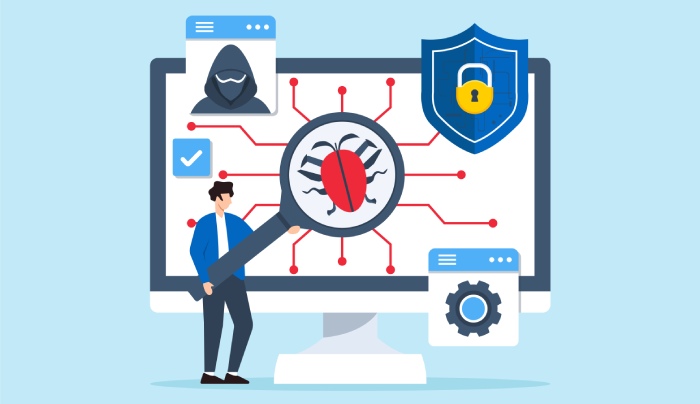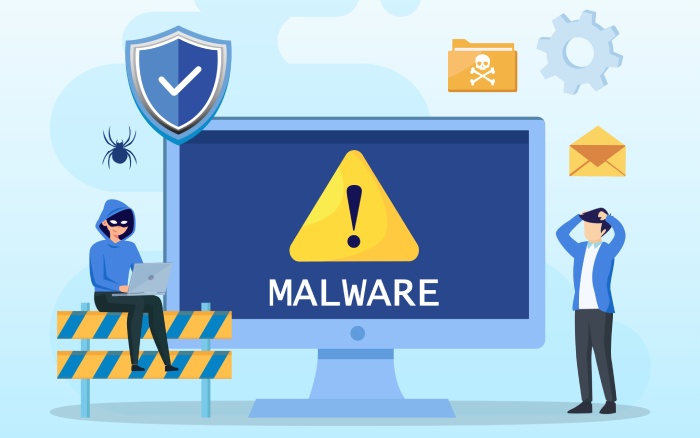What Is Typosquatting? Understanding Its Definition and Risks
Definition of Typosquatting
Typosquatting is a deceptive practice in which cybercriminals register domain names that are intentional misspellings or slight variations of well-known websites. At first glance, these domains might seem benign, but they are often constructed for malicious intent. The primary objective is to capture web traffic meant for legitimate sites; when users fail to enter the URL correctly, they inadvertently land on these fraudulent pages instead.
This technique, also referred to as URL hijacking or domain mimicry, relies heavily on the assumption that most internet users won’t look closely at the web address they are accessing. Instead of being cautious and double-checking what they’ve typed, many simply hit “Enter” and hope for the best.
To put it simply, typosquatting exploits human error, where simple mistakes like transposed letters lead to grave consequences, such as phishing attacks or unintended visits to harmful websites. For instance, when someone means to type “example.com” but types “examplle.com” instead, they may find their device connecting to a site designed solely for malicious purposes—perhaps even a phishing page intended to harvest personal information.
How It Plays Out
Imagine this scenario: you’re rushing to get online—a common occurrence we all experience. You quickly type your favorite website’s URL and inadvertently make a typo. Voila! You’ve walked into a cleverly disguised trap set by scammers right in front of your eyes.
Much like setting up bait for an unsuspecting animal, typosquatting uses these minor errors as opportunities to ensnare victims who aren’t paying close attention. It’s a classic case of misdirection that exploits our everyday behavior.
It’s concerning to note that studies show a staggering 75% of phishing sites are derived from typosquatting domains. This statistic emphasizes just how prevalent and effective this form of cybercrime has become in today’s digital landscape. Awareness is crucial since just one wrong keystroke can lead users down a treacherous path filled with data breaches and identity theft.
With this foundational understanding of the deception involved, we can now explore the strategies behind these cyberattacks and their consequences for individuals and businesses alike.

Mechanisms of Typosquatting Attacks
Typosquatting attacks operate through a series of strategic actions executed by cybercriminals keen on exploiting unsuspecting internet users. At the heart of their tactics lies the registration of domain names that closely resemble common misspellings or slight variations of well-known websites. By doing so, they aim to capture the web traffic of users who mistakenly type in incorrect URLs. This is where their scheme begins to take shape and create potential havoc for users seeking legitimate sites.
The first step in this manipulative process is domain registration. Cybercriminals select a target site—often a popular brand or service—and swiftly register domains that are easy to confuse with the original, such as using “gogle.com” instead of “google.com.” This act is not random; it’s calculated, as studies show that approximately 3% of all internet users regularly make typographical errors when entering URLs, providing ample opportunity for offenders to ensnare their victims.
Once the domain is secured, the next phase involves website setup. Here, attackers create a page that replicates the aesthetics and layout of the genuine site or serves as a mere bait leading to a malicious destination. For instance, when a user clicks on what they think is their banking website but is redirected to an imposter version, the results can be disastrous. Some typosquatted pages may carry familiar logos or design elements to bolster their credibility in the eyes of unwitting users.
Following the establishment of these fraudulent sites, attackers must generate traffic. They often accomplish this by promoting phishing emails containing links pointing to these misspelled domains. When users receive what appears to be an official communication supposedly from a trusted source, they’re much more likely to click on these deceptive links, bringing them face-to-face with malicious content tailored specifically for data theft or even malware installation.
Understanding these mechanisms not only helps individuals recognize threats but also empowers businesses to take proactive measures against such schemes.
To explore further, it’s essential to analyze how specific typo variations contribute to these attacks and escalate risks for all online users.

Common Typo Variations
Typosquatting thrives on the subtle nuances of human behavior, particularly when it comes to typing. The paths that lead users astray are often paved with common mistakes that most of us make daily.
Misspellings
One of the most straightforward forms of typosquatting involves simple misspellings. For instance, a user might accidentally type “gogle.com” when intending to visit Google. This error might seem trivial, but it provides a portal for cybercriminals to create a lookalike site that captures unsuspecting visitors, potentially exposing them to scams or phishing attempts.
Keyboard Errors
Another prevalent issue arises from keyboard layout missteps. The QWERTY layout can sometimes lead users to type unwanted letters due to adjacent keys—a classic example being “amazom.com” instead of recognizing “amazon.com.” These errors are easily made, especially when typing quickly. Cybercriminals know this all too well and exploit it to redirect traffic to malicious sites.
Alternative Domain Extensions
This tactic isn’t just limited to misspellings and accidental keystrokes. It also takes advantage of alternative domain extensions that users might mistakenly believe are legitimate. Imagine entering “mywebsite.co” instead of “mywebsite.com.” Users may not realize they’ve landed on a different site until it’s too late. Using familiar .co or other suffixes, cybercriminals mask their intentions effectively.
In a world where global communication reigns, linguistic variations come into play as well. For instance, differences between British and American English create fertile ground for typosquatting: think “favourite” vs. “favorite.” This slight divergence becomes a stumbling block for even the most discerning users.
Understanding these typo patterns prepares us to face the serious consequences that arise—ranging from financial loss to reputational damage for both consumers and organizations.
Consequences for Users and Businesses
The effects of typosquatting can be severe for both users and businesses. Users risk exposure to phishing attacks, malware, and financial theft, with their personal information hanging in the balance. Picture this: you mistype a URL and, instead of landing on your favorite online store, you’re greeted by a deceptive site asking for your login details. Just that momentary lapse in keystrokes could lead to your data being harvested by malicious actors eager to exploit it.

In today’s digital landscape, where the line between security and vulnerability can easily blur, it is crucial to remain vigilant. A typosquatted site often looks remarkably similar to its legitimate counterpart; the logos may even be indistinguishable. This mimicry makes it all too easy for unsuspecting users to fall victim to subtle but dangerous traps set by cybercriminals trying to steal sensitive information or plant malware onto devices.
Impact on Businesses
The potential fallout isn’t confined to individual users; businesses stand to suffer significant consequences as well.
First, reputational damage can hit hard when customers inadvertently visit typosquatted sites that look like a company’s official page. Imagine the frustration of a loyal customer discovering they’ve been sent astray and exposed to misleading content or harmful malware instead of “your” quality service. Trust is fragile in our hyper-connected world; once shattered, it can take years to rebuild.
Second, there’s the undeniable aspect of financial loss. Misdirected web traffic can translate into lost revenue opportunities for businesses. Every time someone lands on a counterfeit version of your company’s website instead of yours, that’s a potential sale slipping through your fingers. For especially competitive markets, even small dips in web traffic can mean considerable losses.
Furthermore, many companies face hefty legal costs in attempts to combat typosquatting effectively. Legal actions against those who register these problematic domains can quickly accumulate expenses related to investigations, litigation, and negotiation processes.
Take it from one small business owner who shared their story—after encountering issues with typosquatters, they reported losing thousands due to customers mistakenly visiting a fraudulent site thinking it was theirs. The repercussions reached far beyond lost sales; building back trust with customers became an uphill battle.
Amid all these challenges brought about by typosquatting, we must recognize that legal complexities further complicate efforts taken against these cybercriminals. Understanding the ramifications will help guide businesses and individuals alike in establishing stronger defense strategies.
Legal Ramifications and Trademark Issues
Typosquatting often poses significant legal challenges not only for the perpetrators but also for the victims, primarily businesses that find their brand misrepresented through the typo domains. Trademark owners can pursue legal actions based on frameworks aimed at curbing such cybercrimes, primarily centering around trademark infringement and domain name disputes.

Imagine the stress a company experiences when one small typo leads customers astray, directing them to counterfeit sites or purchasing pages that could damage its reputation. It’s a scenario many companies fear as they invest heavily in building their brand.
Victims of typosquatting can turn to laws designed specifically for this purpose. The Uniform Domain-Name Dispute-Resolution Policy (UDRP) is one such tool, allowing trademark owners to contest and reclaim domain names that violate their established trademarks. This system provides a relatively swift resolution process, which is crucial for businesses eager to mitigate the ongoing repercussions of lost traffic or brand dilution.
Likewise, the Anti-Cybersquatting Consumer Protection Act (ACPA) offers robust protection for trademarks, particularly within the United States. The ACPA makes it illegal to register, traffic in, or use a domain name that is identical or confusingly similar to a trademark with the intent to profit.
Ongoing debates exist regarding whether these laws are sufficient in providing robust defenses for brands against the cunning tactics employed by typosquatters. Some argue that loopholes still allow nefarious actors to effectively exploit vulnerabilities, while others believe updated legislation can improve protective measures.
Legal Pathways
Here are two key legal pathways available to trademark owners facing typosquatting issues:
- Uniform Domain-Name Dispute-Resolution Policy (UDRP): This policy allows trademark owners to file complaints against domain names that infringe upon their trademarks, providing an efficient mechanism for dispute resolution.
- Anti-Cybersquatting Consumer Protection Act (ACPA): Under this U.S. law, victims can sue offenders for damages if it can be proven that the offender registered or operated a domain name with bad faith intent.
It’s essential to recognize that laws vary widely across different countries, presenting additional challenges especially for global brands navigating international waters. In places where protections are lax or nonexistent, companies may find themselves helpless against persistent typosquatting practices without effective means to seek redress.
Given these challenges, legal battles can become costly endeavors that drain financial resources and time—bringing into focus the importance of implementing measures that proactively protect brand identity and ensure security against these malicious practices.
Preventative Measures and Defense Strategies
Preventive measures serve as the first line of defense in the ongoing battle against typosquatting. For everyday internet users, adopting a few simple habits can greatly reduce their risk of falling victim to typosquatting schemes. One straightforward strategy is to double-check URLs before hitting enter or clicking on links. It’s easy to mistype a URL, especially when rushing or using mobile devices. Taking an extra moment to confirm that every letter is correct ensures you’re headed to the intended site rather than a fraudulent lookalike.
In addition to verifying links, another valuable practice is bookmarking frequently visited sites.
Bookmarks not only streamline the browsing experience but also help eliminate mistakes associated with typing web addresses. By keeping a well-organized list of favorite sites, users can access them easily without relying on memory or search engines. Moreover, educating others about this simple habit fosters a culture of online safety.

On the business front, organizations need robust strategies in place to safeguard their brands.
Implementing SPF, DKIM, and DMARC helps authenticate your emails, protect your domain from spoofing, and improve overall email deliverability.
Business Strategies
One effective tactic is engaging in defensive domain registrations. This involves registering common misspellings and variations of your primary domain name preemptively. By doing so, companies can deter potential attackers who may exploit users’ typing errors. Think of it as creating a safety net around your online presence; while it requires investment, this strategy can prevent significant financial losses and reputational harm down the road.
| Business Strategy | Description |
| Monitoring Services | Employing services that track domain registrations helps businesses quickly detect emerging typosquatted domains. These services provide timely alerts, enabling swift action before significant damage occurs. |
| Legal Readiness | Establishing a legal strategy ensures clear procedures for responding to discovered typosquatting domains swiftly. Being prepared means you can act decisively if confronted with infringing registrations. |
To put these strategies into perspective, consider how industry giants like Google and Amazon operate.
These companies routinely register dozens of misspelled variations of their domains as a precautionary measure. For them, this proactive approach is part of their commitment to protecting their brand identity and maintaining consumer trust. By implementing similar strategies, smaller businesses can also defend themselves against evolving threats posed by malicious actors in cyberspace.
Implementing these preventive measures—both at the user and business level—forms an essential part of a comprehensive defense plan against the risks associated with typosquatting. Awareness and preparedness can empower individuals and organizations alike to better protect themselves from these lurking threats.
Embracing these best practices significantly enhances both personal security and brand integrity in our increasingly digital world. Staying vigilant will be crucial in combating the sophisticated tactics used by cybercriminals today.







